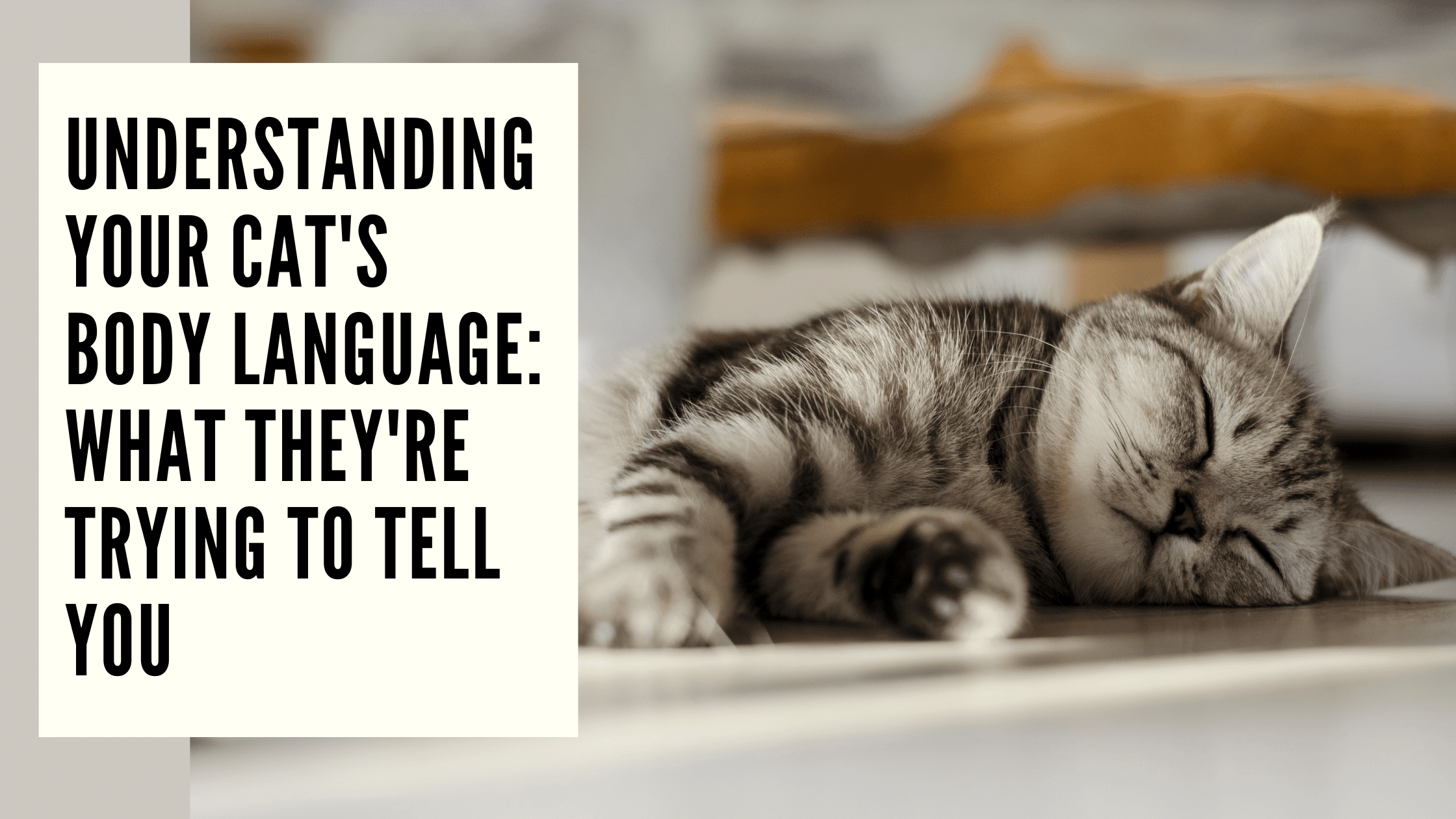Understanding Your Cat’s Body Language: What They’re Trying to Tell You
Cats are enigmatic creatures, often communicating through subtle cues and body language. Understanding what your feline friend is trying to tell you can deepen the bond between you and ensure their well-being. In this article, we’ll explore common cat body language signals, decipher their emotions, and learn how to respond effectively.
Common Cat Body Language Signals
Tail Movements
Cats use their tails as a means of communication, conveying various emotions through different movements.
Straight Up Tail
When a cat holds its tail straight up in the air, it typically signifies confidence and happiness. It’s a welcoming gesture, often seen when they greet their human companions.
Puffed Tail
A puffed-up tail indicates fear or aggression. When a cat feels threatened or startled, they may puff out their tail to appear larger and more intimidating.
Wagging Tail
Contrary to popular belief, a cat’s wagging tail doesn’t always indicate happiness like a dog’s wagging tail. In cats, it can signal agitation or irritation, especially if the tail movements are quick and twitchy.
Ears Position
Cats have incredibly expressive ears that can rotate and move independently, revealing a lot about their mood.
Forward Ears
When a cat’s ears are facing forward, it usually means they’re feeling curious, attentive, or friendly. It’s a positive sign that they’re engaged with their surroundings.
Flattened Ears
Flattened ears pressed close to the head indicate fear, anxiety, or aggression. Cats adopt this posture when they feel threatened or stressed, signaling that they’re prepared for potential conflict.
Eye Expressions
The eyes are often referred to as the windows to the soul, and in cats, they play a significant role in communication.
Dilated Pupils
Dilated pupils can indicate a range of emotions, from excitement to fear. In low light or moments of heightened arousal, a cat’s pupils may enlarge to take in more visual information.
Slow Blinking
A slow blink from your cat is the ultimate sign of trust and affection. Known as a “kitty kiss,” it’s their way of expressing comfort and contentment in your presence.
Vocalizations
While cats are not as vocal as dogs, they still use sounds to communicate with their owners.
Meowing
Cats meow for various reasons, including to greet their humans, ask for food, or seek attention. The tone and pitch of their meows can convey different messages, from friendly greetings to urgent demands.
Hissing
Hissing is a clear indication of fear or aggression. When a cat feels threatened or cornered, they may hiss as a warning sign to stay away.
Understanding Your Cat’s Emotions Through Body Language
Happiness
A relaxed body posture, purring, and slow blinking are all signs of a content and happy cat. They may also knead with their front paws or approach you with a straight-up tail.
Fear
Signs of fear in cats include hiding, flattened ears, dilated pupils, and a tucked tail. They may also crouch low to the ground or try to escape from the perceived threat.
Anxiety
Anxious cats may exhibit excessive grooming, loss of appetite, and avoidance behaviors. They may also vocalize more than usual or engage in destructive behavior.
Aggression
Aggressive body language includes hissing, growling, swatting, and puffing up to appear larger. Cats may also exhibit defensive postures, such as arching their back and bristling their fur.
How to Respond to Different Body Language Cues
Positive Signals
When your cat displays positive body language, respond accordingly to reinforce their trust and strengthen your bond.
Affectionate Behavior
Offer gentle petting, verbal praise, and treats to reward your cat’s friendly gestures and affectionate demeanor.
Contentment Signs
Create a comfortable and safe environment for your cat, providing cozy bedding, interactive toys, and enriching experiences to keep them happy and content.
Negative Signals
Recognize and respect your cat’s boundaries when they exhibit signs of stress or discomfort.
Stress Indicators
Remove potential stressors from your cat’s environment, such as loud noises, unfamiliar pets, or changes in routine. Provide hiding spots and quiet spaces where they can retreat and feel secure.
Aggression Warnings
Avoid confrontational behaviors and give your cat space when they display aggression. Never punish or escalate the situation, as this can lead to further stress and conflict.
Building a Stronger Bond with Your Cat
Observing and understanding your cat’s body language is essential for building a strong and trusting relationship.
Observational Skills
Take the time to observe your cat’s behavior and learn their unique body language cues. Pay attention to subtle changes and respond accordingly to their needs.
Respect Their Boundaries
Respect your cat’s personal space and boundaries, allowing them to approach you on their terms. Avoid forcing interactions or handling them roughly, as this can erode trust and cause stress.
Communication and Response
Establish clear communication with your cat through positive reinforcement and gentle encouragement. Respond promptly to their signals and provide reassurance when needed.
Conclusion
Understanding your cat’s body language is key to deciphering their thoughts and feelings. By observing their subtle cues and responding appropriately, you can strengthen your bond and ensure a harmonious relationship based on trust and mutual respect.
You May Also Like : Why Cats Purr!
FAQs
1. How can I tell if my cat is stressed?
Look for signs such as excessive grooming, hiding, loss of appetite, and avoidance behavior.
2. Why does my cat hiss at me?
Hissing is a defensive behavior often displayed when a cat feels threatened or scared.
3. What does it mean when my cat kneads me?
Kneading is a comforting behavior that stems from kittenhood, indicating relaxation and contentment.
4. Should I punish my cat for aggressive behavior?
No, punishment can exacerbate aggression and damage the bond between you and your cat. Instead, focus on positive reinforcement and behavior modification techniques.
5. How can I help my cat feel more comfortable in stressful situations?
Provide a safe and quiet space for your cat to retreat to, along with familiar scents and comforting objects. Gradually expose them to stressors and offer positive reinforcement to help them feel more at ease.

